It was definitely the craziest harvest in the almost 200-year history of our winery. We even left our jackets at home at night, as even if it hadn’t been so warm, we would still have broken into a sweat. But let’s start at the beginning:
Winter
Still in the old year, we had decided to further enforce our quality standards when pruning the vines. The vineyard sites of our estate wines were also pruned to one cane with few buds in favour of the grape quality. Despite the previous dry vintages, we wanted to prevent diseases caused by standing air and humidity. Less overlapping vegetation and lower density should at the same time ensure that the vines can put enough strength into the remaining shoots. This decision should still benefit us.
The first surprise of the wine year and a small glimpse of what was to come came when the shoots were bent in mid-March: air temperatures of up to 20° with blue skies. This sounds very pleasant, but for us winegrowers it is rather scary, because early budbreak massively increases the risk of frost damage. Shortly afterwards, however, the temperatures returned to normal for the time being and at the end of March were close to the annual average at 10-15°. There was still calm in the vineyard.
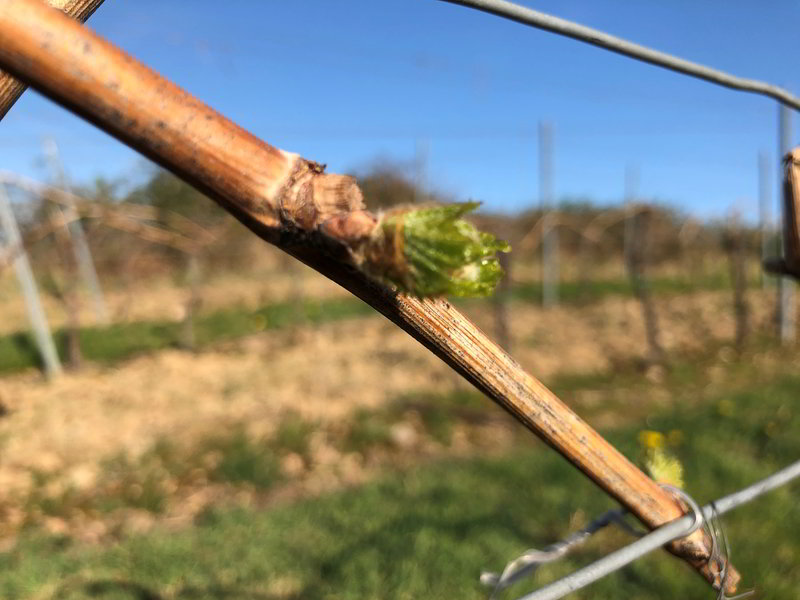
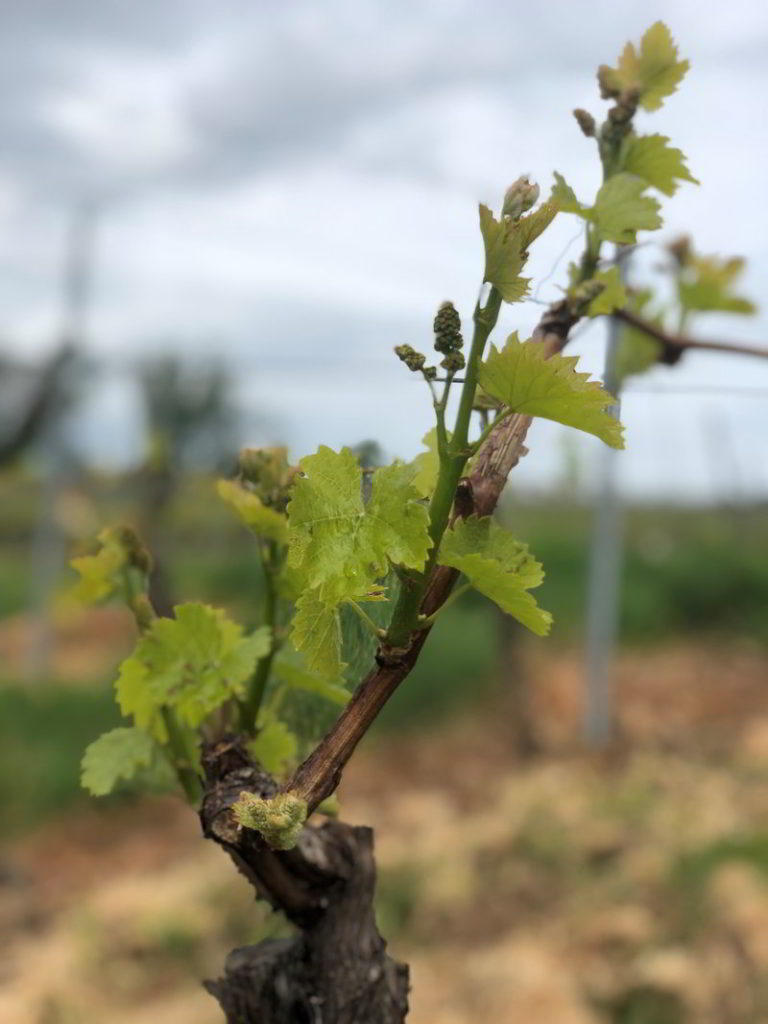
Spring
On 8 April our sensor in the Siefersheimer Heerkretz then reported an air temperature of 26.73°, which is record-breaking even for this warm location. The rest of the week was not much colder in the afternoons, so that the first leaves bursted from the buds on April 10th. There was still a long wait for abundant rainfall, but growing continued at a rapid pace. One week later, two leaves had already unfolded and by the end of the month there were six leaves all over.
have been largely spared damage from late frosts in recent years. During the night of 12 May, however, the temperature in Gumbsheim dropped to -2°C according to our weather station, and we knew that some of the vines of the Chardonnay that were growing in the valley would not make it. The sensor is located in the middle of the steeply rising vineyard, so a few metres higher than the cold accumulation at the foot, where it must certainly have been a degree or two colder. During the walk-through – it was already T-shirt weather again – we said goodbye to a good third of our 2020 Chardonnays. Fortunately, there were no further frosts. Other regions were much harder hit. The pictures are always a tragedy and make us sad.
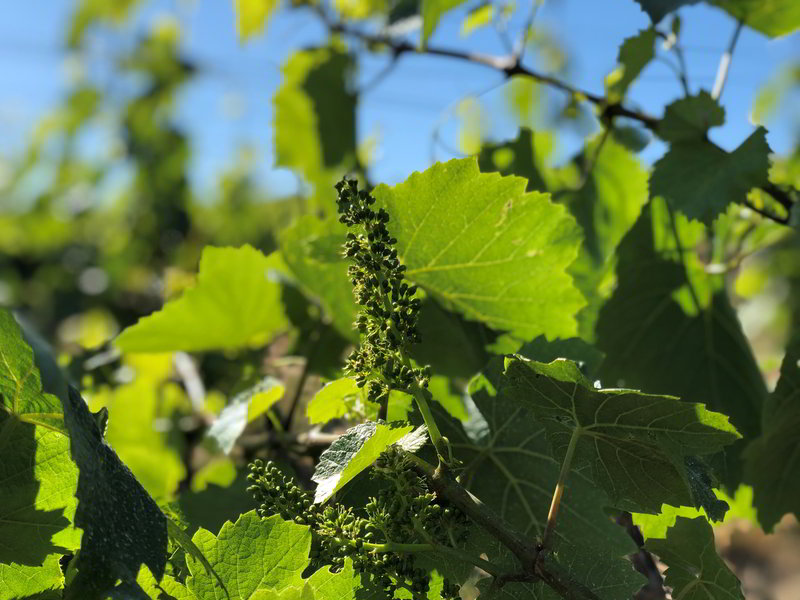

By the end of May, almost every vineyard site was in full bloom. Apart from a few measly rains at the beginning of the month, it remained bone dry throughout the entire merry month. We decided to loosen up the inter-planting in particularly dry areas to at least make it easier for the little rainfall to enter the soil.
Summer
Around June 8th, flowering was over in most of the vineyards and the good old 100-day rule for roughly predicting when the grapes could be harvested should prove to be quite accurate later in the year. A few low-yielding rain showers passed through Rheinhessen and many of them passed us by. As in previous vintages, there was little sign of the growth-promoting wet summer months that are characteristic for German growing regions. Most vineyards benefited from the low utilisation of the vines, the open soils and dense, shady foliage.
The grape closure and the colouring of the red berries started earlier than usual, as was to be expected after the early flowering. Already in the first week of August, many berries had softened or even developed some sugar. We took the autumn preparations up a notch.
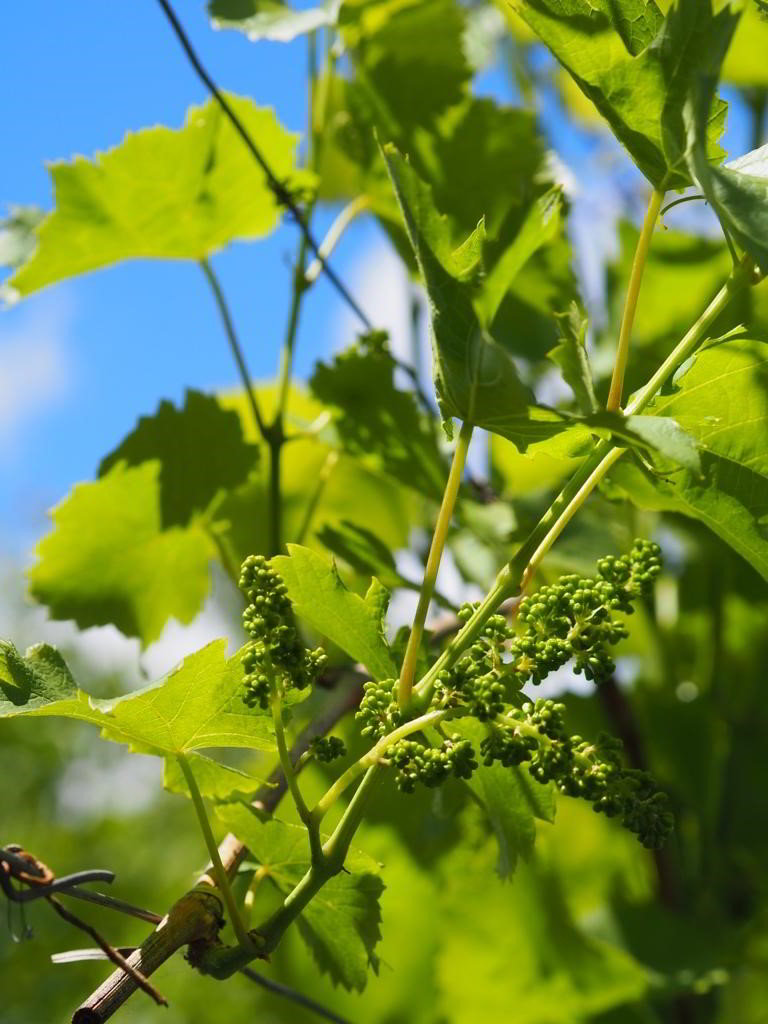

Autumn
It was Paul’s first autumn as cellar master at the Gebert winery and he had his heart set on a lot. Everything was cleaned even more meticulously, new stainless steel tanks were lined up for the separate vinification of other sites, and all the equipment was thoroughly tested for function. With the first precocious berries in the mouth, the detailed planning of the vinification styles began – in the middle of the vineyard, where the whole team was still energetically gathering for the green harvest and the pre-selection. Countless third grapes and oats left us and found their way back into the vineyard cycle. In places we manually de-leafed to give a few hidden grapes a little more ripeness on their way. Long trousers were out of the question, the harvest can’t be that close yet, can it? The first ripeness measurement was still a long way from the target values.
Shortly afterwards, when we were looking forward to a day off, the grape wagon polished in the courtyard, the press shining like new in the sun, so we were done with all the preparations, we set off for another maturity test. The old convertible, shorts, wind, loud music. A summer day, actually. We picked 100 grapes from each single vineyard for the second time, tasted and marvelled. The ripening was progressing with huge steps. One got the impression that nature was trying to keep to the 100-day rule by any means.
Back at the winery, we mashed the grapes and put the juice on the digital refractometer, which then tells us the sugar levels of the individual sites. The more pre-selected rows for the site Riesling from the Heerkretz ripened faster than the rest, which pleased us. The red varieties benefited greatly from the dry warmth and ripened beautifully. But: Instead of the usual degree Oechsle sugar increase per day, it was almost two everywhere. The Gewürztraminer in our steepest south-facing vineyard ripened even faster. It was no longer possible to think of ending the workday and with rough projections we started planning the harvest dates that same evening.
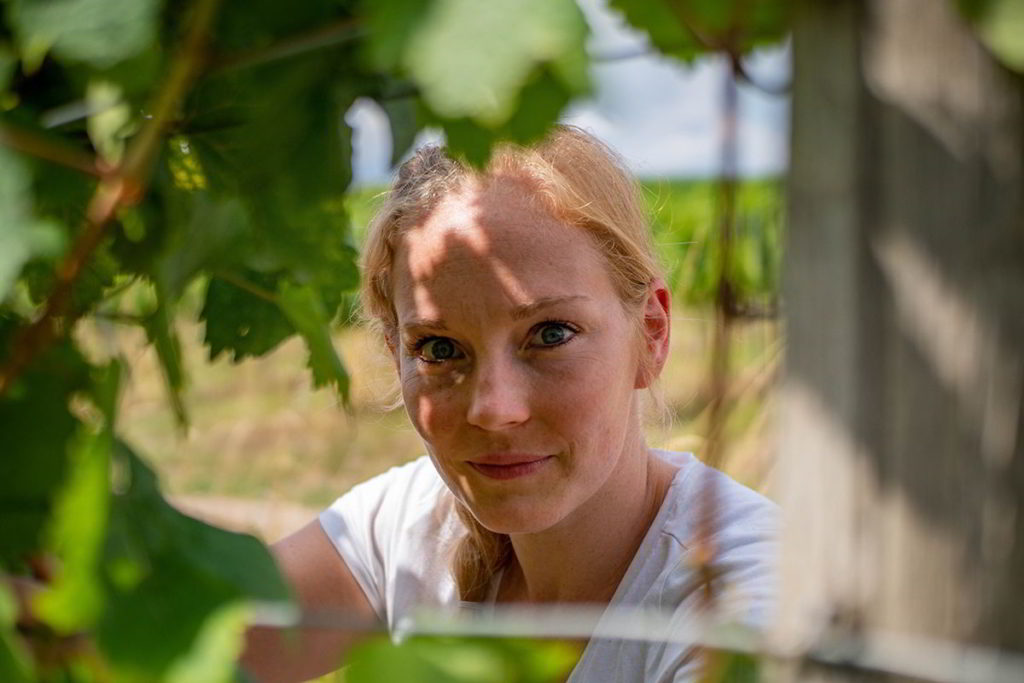

At such temperatures (on 15 September it was still 32°) one should avoid harvesting during the day. If the grapes go into fermentation too warm, they either have to be cooled at great expense to the environment, or there are off-flavours due to too rapid fermentation. At the same time, there were not many days left for the harvest of ripe but not too sweet grapes, from which elegant and fruity wines are made. Different sites, different grape varieties and different target ripeness levels equalise this in most years, but when ripeness is so fast, it is a challenge even with comparatively few vineyards.
Already on the first day of harvesting, real teamwork was required. During the day, part of the team pre-selected the vineyard sites that were to be harvested by the machine. During the night, the cool grapes were then picked and processed. In the early hours of the morning, after dawn and with temperatures still moderate, the whole team was busy with the manual harvest of the local and site wines. This went on for a whole week. The quietest time at the winery was probably between 11 p.m. and 2 a.m., when everything was clean and tidy again and both the grapes and the team members were taken care of. After that, the first alarm clocks rang again.
We harvested up to three vineyards a day this way. The ripeness of the grapes matched the targets and the quality of even the mechanically harvested grapes exceeded our expectations. Time flew by, exhaustion was evident on everyone’s face. We showed consideration for each other, patted each other on the back, tried to go easy on each other when necessary. This happened surprisingly rarely, because the mood in the team was excellent, rather euphoric. Everyone always came together for meals, for planning and for one or two beers at the winepress. Paul brought a spirit of optimism and a lot of new expertise, Anne her organisational talent and her irrepressible diligence, Jochen his experience and the necessary pragmatism. Lara was always on the spot in a good mood, Jan was everywhere and nowhere, but always easy to find because of his music. If Heidrun hadn’t constantly kept things tidy, all the kitchens and common rooms would have been a battlefield after just a few days.
It was a rush. The temperatures were just dropping a little when the next deadline arrived with the announcement of a big rain front. Rain at harvest time means either an increased risk to the health of the remaining grapes or more water in the wine. Not with us, so on we went at the same pace. After only 10 days, on the last rain-free day, the last berry was suddenly in the cellar. The Heerkretz Riesling had taken most of the time, as usual, almost the only normal thing about this autumn. Two fermenting white wines needed some cooling, the red wine grapes fermented “like in ancient Rome” in the mash vats. The busy and noisy hustle and bustle slowly gave way to a quiet bubbling. The first samples of must and Federweisser were already very promising.
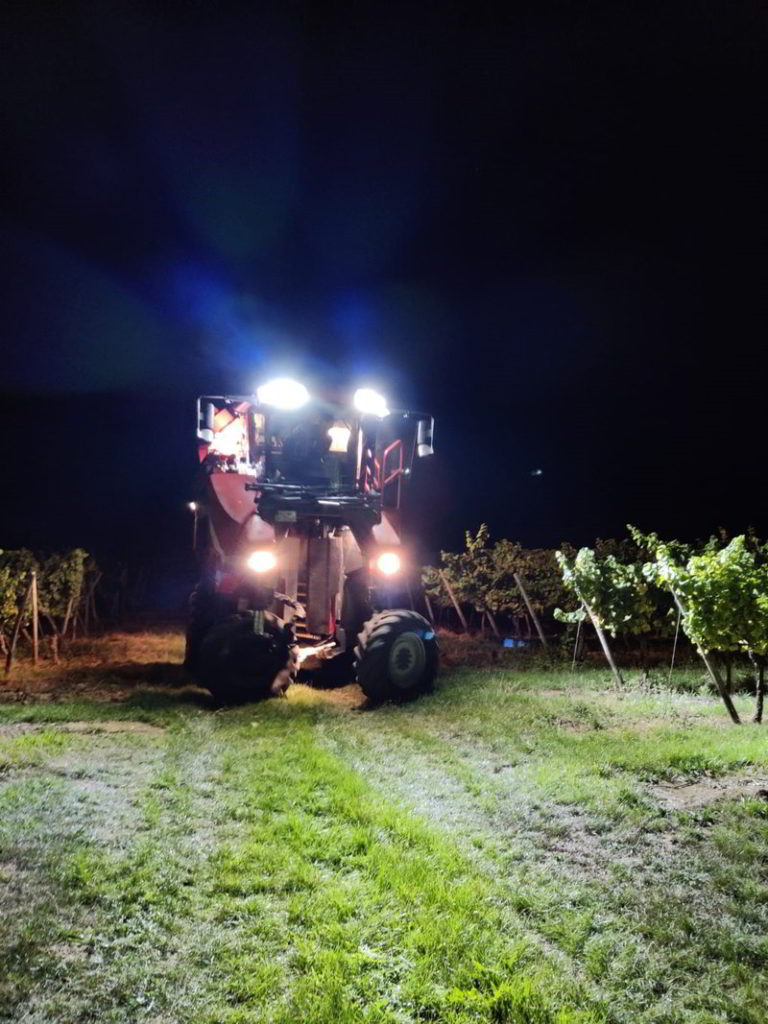
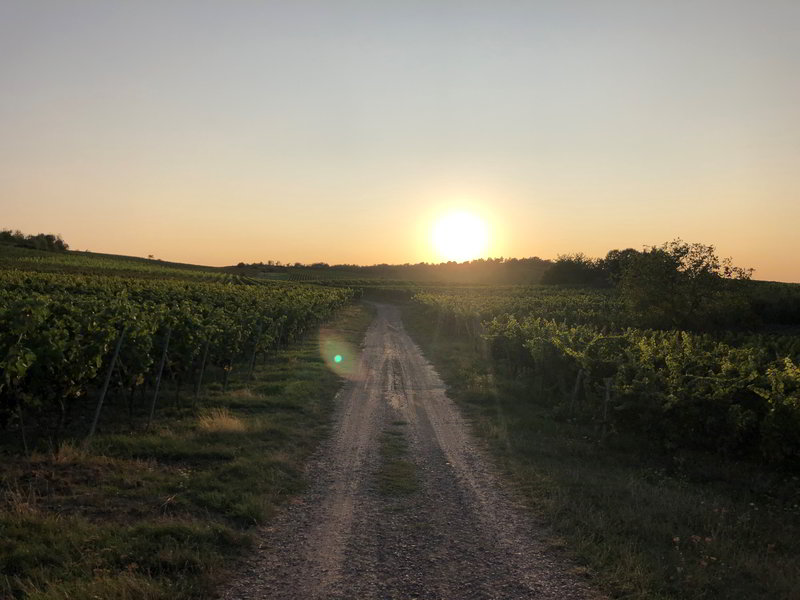
Vintage Conclusion
The goal of producing light, elegant and fruity white wines was not easy in Rheinhessen in 2020 and could only be achieved with our full commitment. It can be foreseen that the wines with a little maturity will be more aromatic than filigree, but there are also very fine fruity wines in the barrels. The climate forced the vines to get their nutrients from the last reserves of the soil and we expect that this will be reflected in wines that are very characteristic of the site.
The bouquet grape varieties already show a great aroma and a lush nose. The white Burgundy varieties range from elegant (Pinot Blanc) to fruity (Chardonnay) to opulent (Pinot Gris). The Rislings, which as a cool-climate grape variety should actually have suffered the most from the conditions, all surprised with enormous fruitiness and juiciness with surprisingly varietal-typical acidity values. As expected, the conditions were extraordinarily good for our red wines, especially the Regent and the Pinot Noir. The aromas from the fully ripe and healthy grapes are still overflowing, but they will sort themselves out over the coming months and the vintage will most certainly mature into one that we will enjoy for many years to come.
